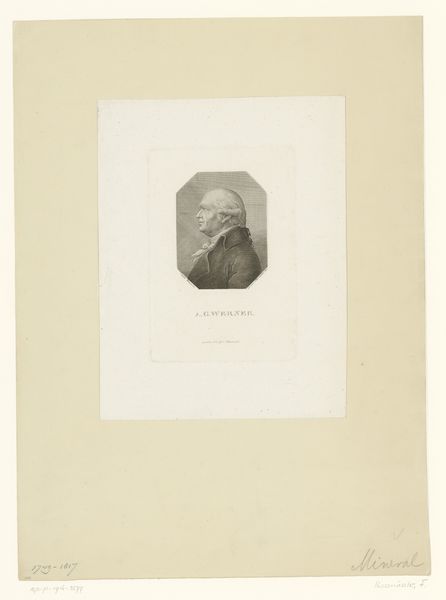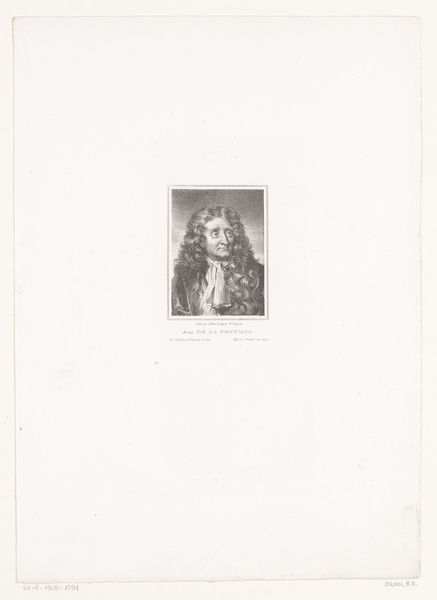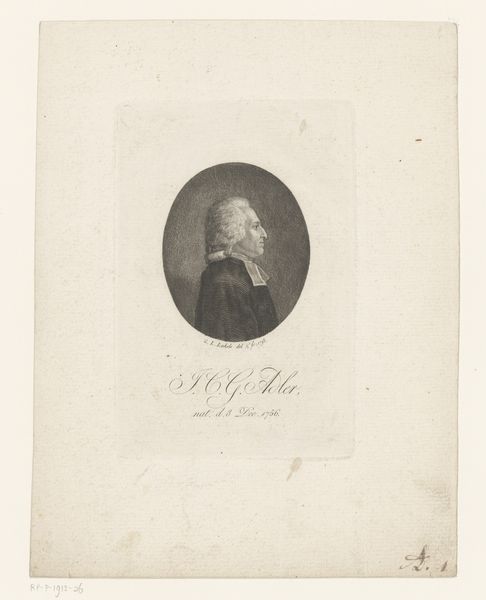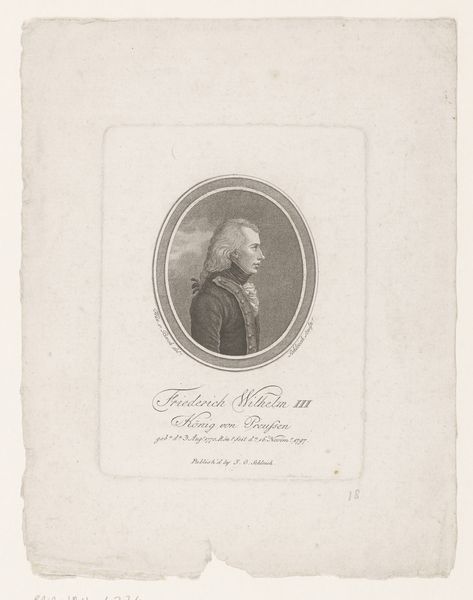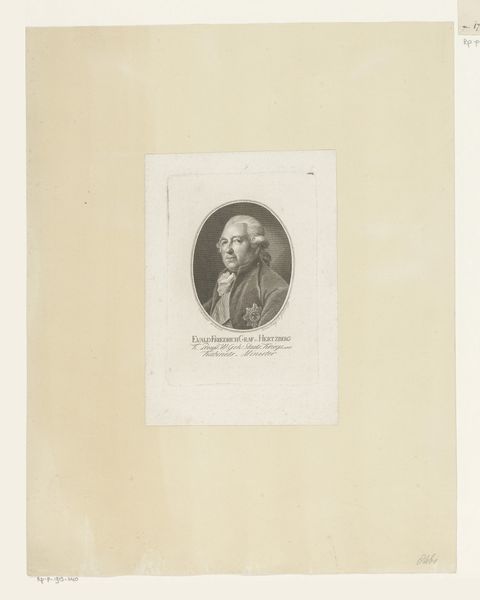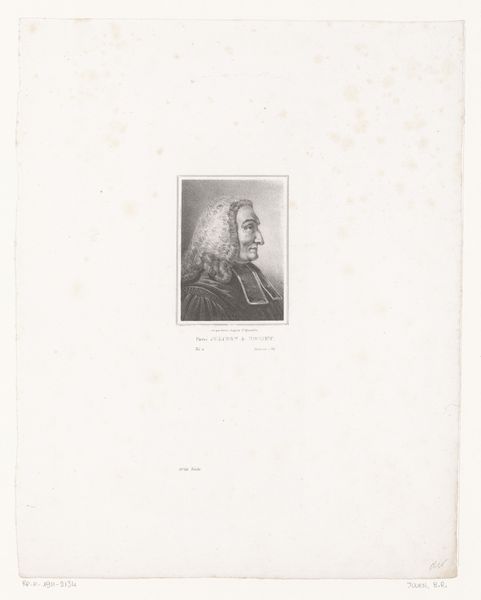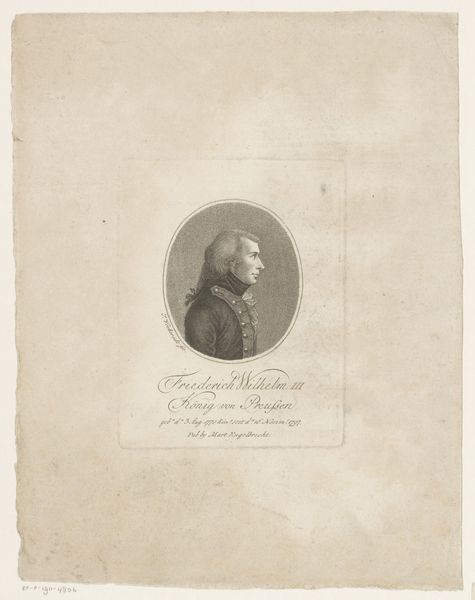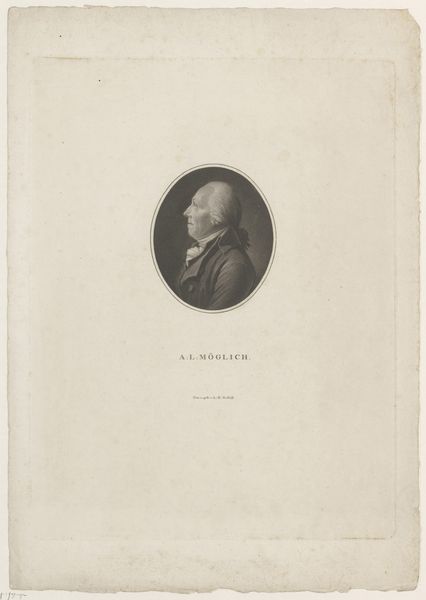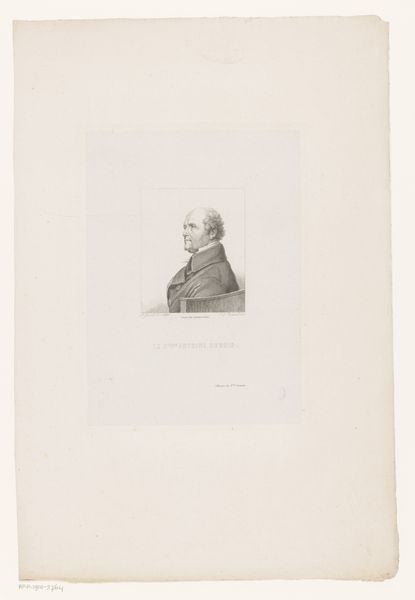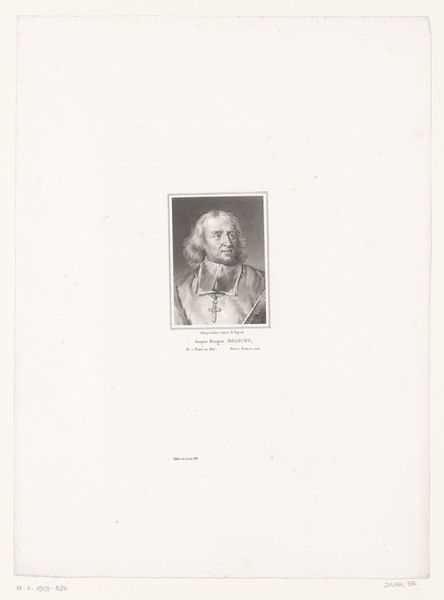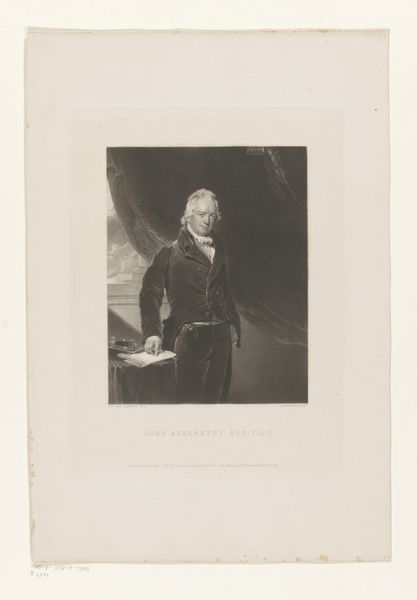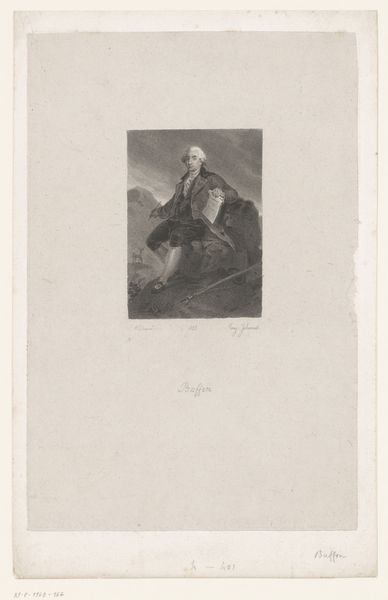
print, engraving
#
portrait
#
neoclacissism
# print
#
academic-art
#
engraving
Dimensions: height 231 mm, width 153 mm
Copyright: Rijks Museum: Open Domain
Curator: Here we have Tony Johannot's "Portret van René-Aubert Vertot," an engraving from 1822 currently residing at the Rijksmuseum. Editor: My first impression is a feeling of restrained formality. The figure sits bathed in soft light, and yet there's a certain rigidness to his posture that gives off an air of self-importance, a real performance of authority. Curator: That resonates with what we know of Vertot and the socio-political dynamics of the era. The subject, René-Aubert Vertot, was a historian during the Enlightenment; an important figure, not only in his field, but a member of French high society and the clergy. Think about who could commission such a portrait at the time. How would one use this image of Vertot? Who benefits? Editor: Precisely. In that context, consider how this image intersects with concepts of power and knowledge dissemination. Look at him seated at his desk—the trappings of scholarship and academia laid out for the viewer, yet his hand is ever-present, not actually writing, as if pausing to address someone in court. Is this simply a portrait or propaganda? Curator: I agree it's more than meets the eye. It embodies the era's complex relationship with history itself. In many ways it perpetuates an inherently male, largely white and affluent point of view, while consciously suppressing alternative perspectives of Vertot's world. Can the social standing of the historical actors distort their legacies and thus subsequent analyses of art produced within that moment? Editor: An interesting perspective. And while Vertot certainly participated in systems that benefitted his own class and kind, there are additional threads worth exploring here. Consider the technical aspects: the engraving's neoclassical style harkens back to Roman and Greek aesthetic ideals. Do the choice of style and medium influence its reception within contemporary audiences? Does that reinforce an image of timeless erudition? Curator: Certainly, neoclassical aesthetic sensibilities shaped not only art, but social and political aspirations, serving specific cultural goals. The scale and monochromatic quality contribute to its authoritative presence. We're confronted with this image of a learned man who may consciously, or unconsciously, embody values perpetuating hierarchies and inequalities. Editor: A vital layer to understanding both the artwork and its cultural impact, emphasizing the responsibility we have to unpack and critique ingrained biases, past and present. Thanks for adding this crucial point. Curator: Likewise. It's a conversation we must continue having.
Comments
No comments
Be the first to comment and join the conversation on the ultimate creative platform.
